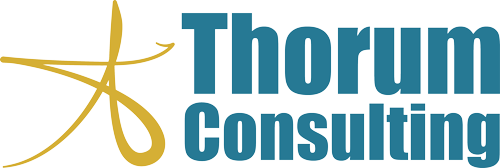You know how important your staff are to your operations, and that you cannot continue to grow your business without help. You also know that labor expense is a significant line item on your Profit & Loss statement.
In evaluating your labor force, consider this; how much in return is the company receiving for the amount the employees are being paid. If it is positive, congratulations! However, if not then you need to investigate because this represents negative cash flow.
Your Labor expense is made up of two parts:
- Amount paid to the employee – hourly, salary or commission, and benefits
- Efficiency or productivity
Amount Paid to the Employee
The costs associated with hourly employees are their rate per hour, markup for taxes and insurance, fringe benefits, and employee amenities. Each of the costs warrant scrutiny. Of the costs associated with payroll, only payroll taxes are inflexible. The rate per hour, fringe benefits, workers compensation insurance and amenities are all worth examining for cost-cutting measures.
Stating the obvious, cutting wages is never well received. In a competitive labor market where employees can pick and choose where they want to work, the first thing they are attracted to is how much they are going to get paid. A reasonable wage must be offered to attract and retain a staff. Make sure the rate you are paying your employees is fair and competitive.
The second thing employees look for is the benefits offered, the perks.
- Health Insurance. Investigate and educate yourself on the options available. Be sure to periodically educate your employees on their health benefits. The many options may confuse some employees.
- Employee amenities. The work environment impacts safety and a comfortable place to work. This includes break areas, parking, commuting services, day-care services, good tools, safety gear, to name a few.
- Paid Time Off (PTO). Employees expect a reasonable policy for vacations, sick leave, maternity leave, bereavement time, and other times that are paid while not at work.
Efficiency and Productivity
To promote efficiency and productivity, examine the staff’s work environment. Do the employees have the tools they need to get their job done? Is the area clean and free of obstacles? Is the work flow well organized and documented? What obstacles are in the way from them being fully productive? And are employees free to suggest improvements in their work space to improve their ability to perform their duties?
Another strategy is to provide incentives based on productivity and quality of work. This works well in services industries, where those who are directly involved in projects for clients are rewarded for project completion, profitability, and customer satisfaction. When possible, base their bonuses on the gross profit made on the projects they worked directly on.
Though this does not provide additional cash flow in the short-term, it does provide substantial long-term benefits. It can create a culture in the company for those directly involved in production to be loyal to keeping costs at bay, deliver quality work, and on time.
Incentives such as these can help reduce employee turnover. A cost that is hidden in many companies is the expenses involved in bringing a new employee up to full capacity. Besides being an expense to the company that is not contributing as much to operations, a new employee infringes on the productivity of co-workers. Reducing the amount of employee turnover is a cost-saving measure, even in an environment where a new employee could be hired for a lesser salary or rate per hour.
There could also be additional employer taxes on the employee – in the U.S. a company’s Unemployment Insurance rates are based on turnover. And contributions to the fund must be made for each new employee until a limit is met.
When evaluating your labor costs, there is an exchange between what you are paying your employees and what they are delivering to the company’s profit and growth. The bottom line is to develop a culture that attracts ideal employees who want to work and want to stay. This comes from an environment where they are given a competitive wage, good benefits, a safe and productive workspace, and rewarding them in such a way that they feel they belong to a team. The expenses involved in these employee perks should be viewed as an investment in the workforce that will pay future dividends. In the long-term, there is cash-flow to be found through reducing training and onboarding costs, waste, and unnecessary expenses. Cash flow is also generated in an efficient and productive workplace, where employee pride promotes quality work.
Always remember, you cannot do it all yourself. And there are people who have the expertise and desire to do some of the tasks that bog you down. A well-trained workforce that works together toward the company’s objectives is the key to growth and profitability.
Let us partner with you to turn your business development strategy into real, measurable success.



